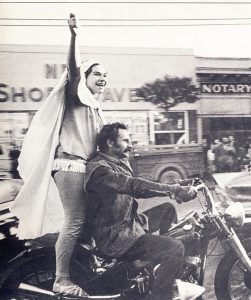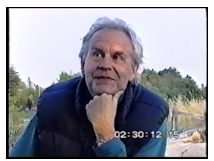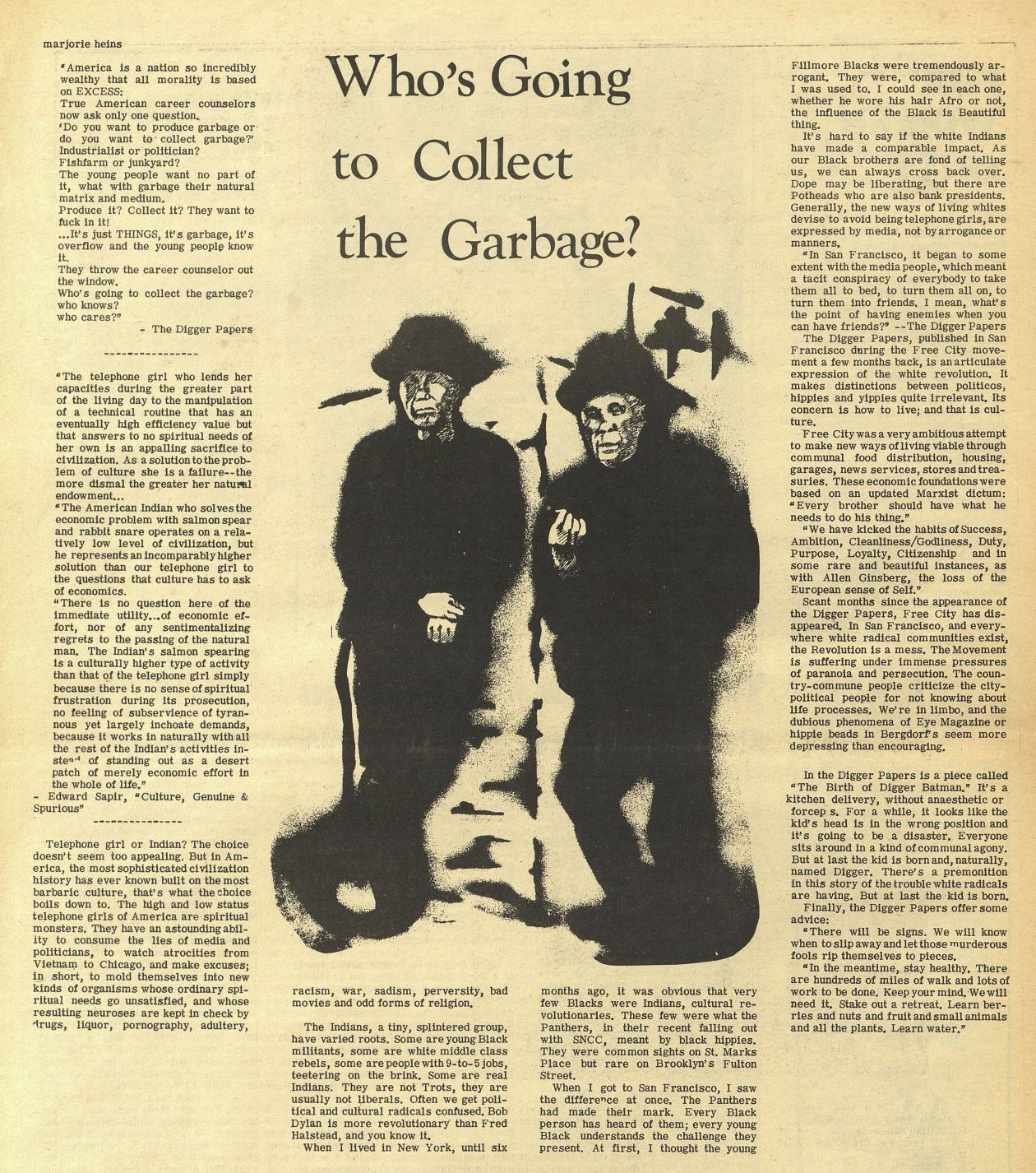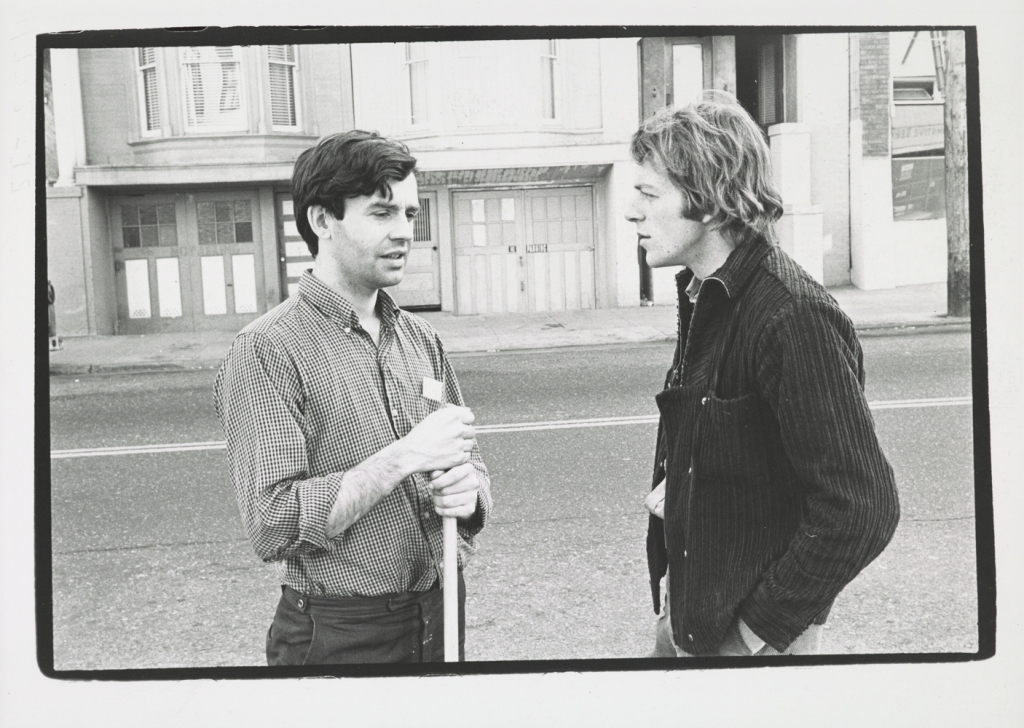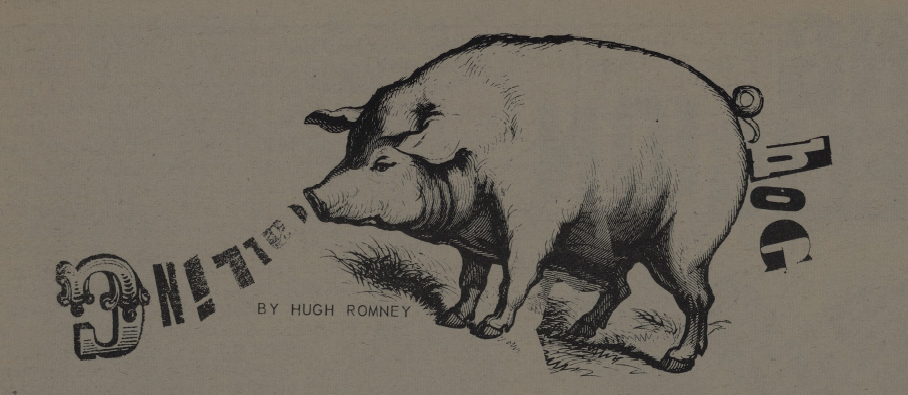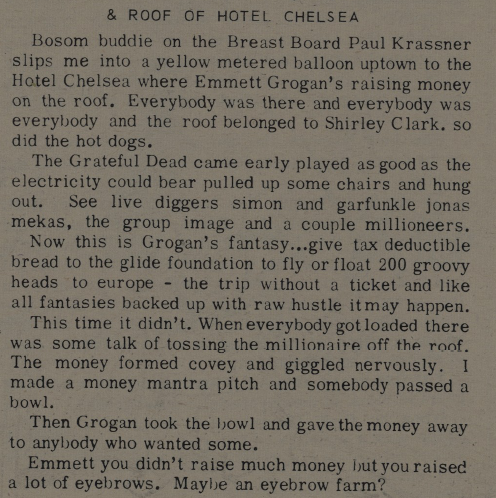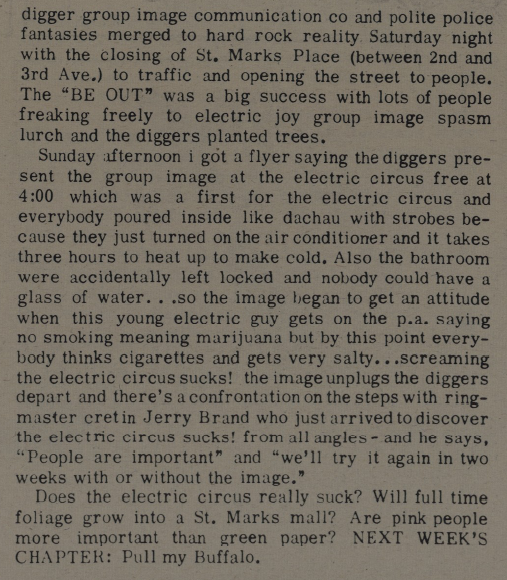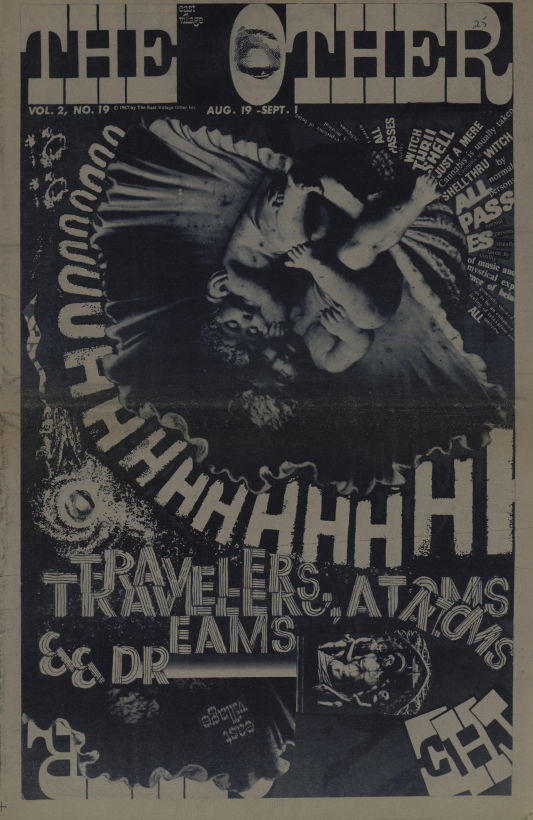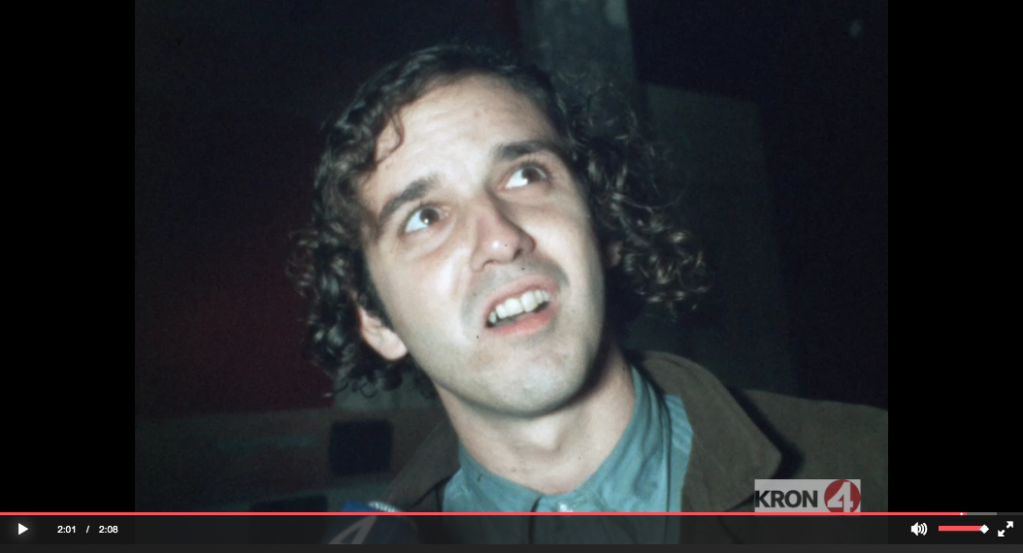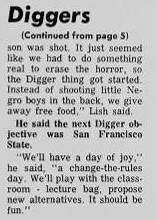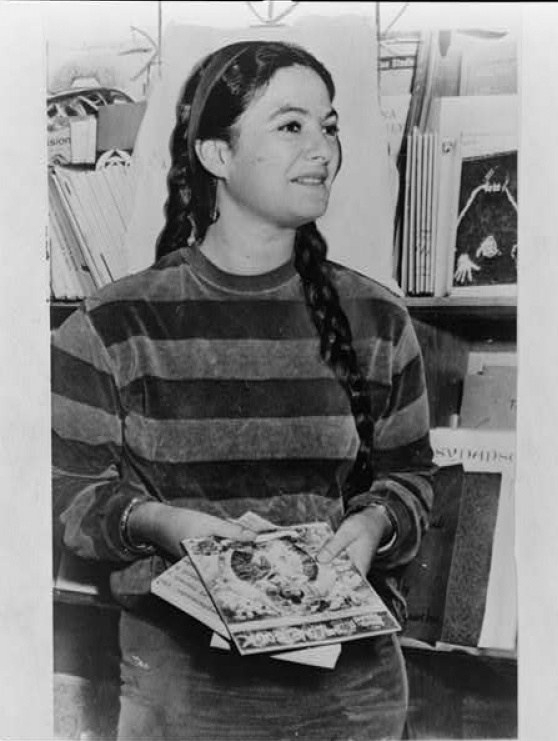
Diggers.org archivist Eric Noble has posted the text of a previously unpublished 1998 interview with Lenore Kandel.
A very small portion of this hour-plus interview, conducted by French filmmakers Alice Gaillard and Céline Deransart, was used in their documentary Les Diggers de San Francisco. The remainder of the conversation has now been transcribed and edited for clarity and is now online. (I helped with some editing.) Go here to read it: https://diggers.org/lenore_kandel.htm
Lenore Kandel was a visionary poet, famed author of the controversial ‘holy erotica’ ‘The Love Book,’ an accomplished belly dancer and folk musician, the only female speaker at the Human Be-In (which occurred on her 35th birthday), and by many accounts, a major, imaginative, persistent force within the Diggers and the Haight scene in general, especially during the crucial 1966-1968 period. (Eric argues that it’s Lenore’s repeated, public use of “Love” that gave the “Love Generation” its name… I don’t know if I’m persuaded on that count [yet], but it’s possible!) She was involved in the early ’60s with Beat poet Lew Welch (they both appear, thinly fictionalized, in Jack Kerouac’s semi-autobiographical 1962 novel, Big Sur); published countless poems in small press magazines, chapbooks and the 1967 Grove Press collection, Word Alchemy (a posthumous 2012 collection of her complete poetic output is in print); appeared with boyfriend/Digger/Hells Angel Bill ‘Sweet William’ Fritsch in Kenneth Anger’s ‘Invocation of My Demon Brother‘; and, along with many other Diggers, was a featured poet at The Band’s ‘The Last Waltz’ concert.
Untreated injuries resulting from a 1970 motorcycle accident caused Lenore severe pain for the rest of her life; by the ’90s, when this interview was conducted, she was essentially homebound — but, as you will read, she remained intellectually alive, articulate and learned, playful and joyful. There are so many lovely passages in this interview. Yes, I wish Lenore had talked about her own family background, Fritsch, Hells Angels, all the incredible Diggers women, Diane di Prima, Emmett Grogan, Lew Welch, and on and on—but I am so grateful for what is here.
On a personal note, I had hoped to interview Lenore regarding the Diggers in 2006 with my documentary filmmaking partners; however, when I contacted her, she was in one of her periods when she was feeling unwell. She asked me to call back. In 2009, as my partners and I started to prepare a second trip to northern California to conduct further interviews, Lenore was at the top of our list. Before I called her to try and schedule, I did a quick Google search, and was saddened to learn that she had passed away the previous week.
Everyone that I subsequently interviewed about the Diggers talked about Lenore with great fondness, especially Phyllis Wilner and Vicki Pollack. (Peter Berg and Kent Minault also shared some vivid memories of her brilliance.) Unfortunately, there is almost no record—in print or otherwise—of Lenore herself talking at much length about the Diggers. So, I am especially happy that Alice and Celine shared the unexpurgated footage of their interview with Lenore with Eric—and that he has now made it available to everyone. Love wins.
